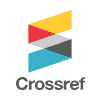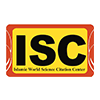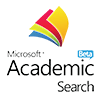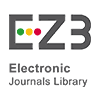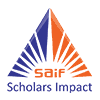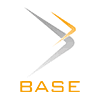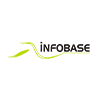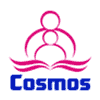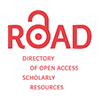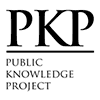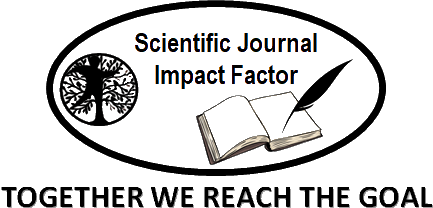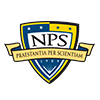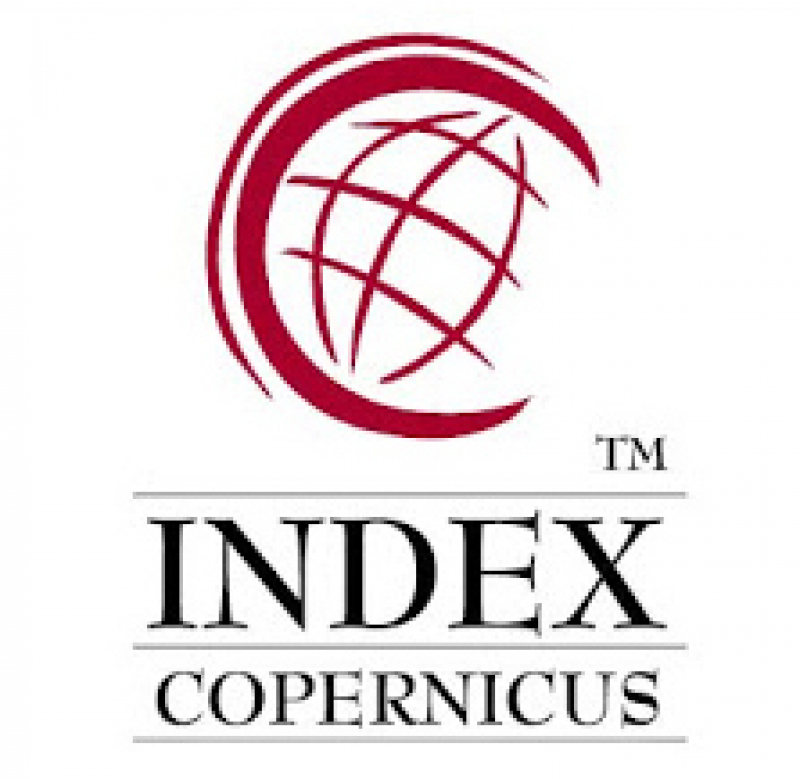The Integration of Multimodality in English as a Foreign Language Learning in Indonesia
Abstract
The rapid development of digital technology has transformed human communication, shifting from text-based and verbal interactions to multimodal exchanges that incorporate visual, audio, gestural, and other semiotic elements. This shift has significant implications for education, particularly in English as a Foreign Language (EFL) instruction, where students increasingly engage with multimodal content in their daily lives. This study looks into how multimodality is included into EFL classrooms in Indonesia through a literature review, analyzing its conceptual foundations, supporting policies, and current practices. The synthesis reveals that while multimodality enhances student engagement, comprehension, creativity, and critical thinking which are essential for digital-native learners, challenges such as limited teacher training, inadequate access to technology, and regional disparities hinder its implementation. The review concludes with recommendations for future research, including exploring teachers’ perspectives, developing effective multimodal strategies, and investigating the impact of multimodality on student learning outcomes in Indonesian EFL contexts.
Keywords
Full Text:
PDFReferences
Anderson, K. T., Stewart, O. G., & Kachorsky, D. (2017). Seeing academically marginalized students’ multimodal designs from a position of strength. Written Communication, 34(2), 104–134. https://doi.org/10.1177/0741088317699897
Bouchey, B., Castek, J., & Thygeson, J. (2021). Multimodal learning. In J. Ryoo & K. Winkelmann (Eds.), Innovative Learning Environments in STEM Higher Education: Opportunities, Challenges, and Looking Forward (pp. 35–54). Springer. https://doi.org/10.1007/978-3-030-58948-6_3
Cahaya, A., Yusriadi, Y., & Gheisari, A. (2022). Transformation of the education sector during the COVID-19 pandemic in Indonesia. Education Research International, 2022, 1–8. https://doi.org/10.1155/2022/8561759
Cahyadi, A., Hendryadi, Widyastuti, S., Mufidah, V. N., & Achmadi. (2021). Emergency remote teaching evaluation of the higher education in Indonesia. Heliyon, 7(8). https://doi.org/10.1016/j.heliyon.2021.e07788
Chen, C. W. (2021). Composing print essays versus composing across modes: Students’ multimodal choices and overall preferences. Literacy, 55(1), 25–38. https://doi.org/10.1111/lit.12234
Cope, B., & Kalantzis, M. (2009). “Multiliteracies”: New literacies, new learning. Pedagogies: An International Journal, 4(3), 164–195. https://doi.org/10.1080/15544800903076044
Cope, B., & Kalantzis, M. (2015). The Things You Do to Know: An Introduction to the Pedagogy of Multiliteracies. In B. Cope & M. Kalantzis (Eds.), A Pedagogy of Multiliteracies (pp. 1–36). Palgrave Macmillan UK. https://doi.org/10.1057/9781137539724_1
Cope, B., & Kalantzis, M. (2021). Pedagogies for digital learning: From transpositional grammar to the literacies of education. In Multimodal Literacies Across Digital Learning Contexts (pp. 34–54). Routledge. https://doi.org/10.4324/9781003134244-3
Dahlström, H. (2022). Students as digital multimodal text designers: A study of resources, affordances, and experiences. British Journal of Educational Technology, 53(2), 391–407. https://doi.org/10.1111/bjet.13171
Ditjen Dikdasmen SLM Taskforce. (2018). Strategi literasi dalam pembelajaran di sekolah menengah pertama: Materi penyegaran instruktur Kurikulum 2013 (Second). Ministry of Education and Culture.
Djamdjuri, D. S., Suseno, M., Tajuddin, S., Lustyantie, N., & Chaeruman, U. A. (2021). Multimodal approach in online EFL class using Islamic learning materials: Students’ perspective. International Journal of Language Education, 5(4), 337. https://doi.org/10.26858/ijole.v5i4.22495
Drajati, N. A., Tan, L., Haryati, S., Rochsantiningsih, D., & Zainnuri, H. (2018). Investigating English language teachers in developing TPACK and multimodal literacy. Indonesian Journal of Applied Linguistics, 7(3), 575. https://doi.org/10.17509/ijal.v7i3.9806
Ganapathy, M., & Seetharam, S. A. (2016). The effects of using multimodal approaches in meaning-making of 21st century literacy texts among ESL students in a private school in Malaysia. Advances in Language and Literary Studies, 7(2). https://doi.org/10.7575/aiac.alls.v.7n.2p.143
Grapin, S. (2019). Multimodality in the new content standards era: Implications for English learners. TESOL Quarterly, 53(1), 30–55. https://doi.org/10.1002/tesq.443
Head of Education Standard, Curriculum, and Assessment Agency Decree on Learning Outcomes for Early, Primary, and Secondary Education, Pub. L. No. 033/H/KR/2022, Ministry of Education, Culture, Research, and Technology (2022).
Iyer, R., & Luke, C. (2010). Multimodal, multiliteracies: Texts and literacies for the 21st century. In D. L. Pullen & D. R. Cole (Eds.), Multiliteracies and Technology Enhanced Education: Social Practice and the Global Classroom (pp. 18–34). IGI Global.
Jayanti, E. D., & Damayanti, I. L. (2023). Exploring teachers’ perceptions of integrating multimodal literacy into English classrooms in Indonesian primary education. Child Education Journal, 5(2), 98–109. https://doi.org/10.33086/cej.v5i2.5240
Jewitt, C. (2005). Multimodality, “reading”, and “writing” for the 21st century. Discourse: Studies in the Cultural Politics of Education, 26(3), 315–331. https://doi.org/10.1080/01596300500200011
Jewitt, C. (2009a). An introduction to multimodality. In The Routledge handbook of multimodal analysis (pp. 14–27). Springer.
Jewitt, C. (2009b). Introduction: Handbook rationale, scope and structure. In C. Jewitt (Ed.), The Routledge handbook of multimodal analysis (pp. 1–7). Routledge.
Jewitt, C., Bezemer, J., & O’Halloran, K. (2016). Introducing multimodality (First). Routledge.
Kessler, M. (2022). Multimodality. ELT Journal, 76(4), 551–554. https://doi.org/10.1093/elt/ccac028
Kress, G. (2009a). Multimodality. Routledge. https://doi.org/10.4324/9780203970034
Kress, G. (2009b). What is mode? In C. Jewitt (Ed.), The Routledge handbook of multimodal analysis (First, pp. 54–66). Routledge.
Kress, G., & Van Leeuwen, T. (2001). Multimodal Discourse: The modes and media of contemporary communication. Arnold.
Kulju, P., Kupiainen, R., Wiseman, A. M., Jyrkiäinen, A., Koskinen-Sinisalo, K.-L., & Mäkinen, M. (2018). A Review of Multiliteracies Pedagogy in Primary Classrooms. Language and Literacy, 20(2), 80–101. https://doi.org/10.20360/langandlit29333
Kustini, S., Suherdi, D., & Musthafa, B. (2018). A multimodal based-instruction in an EFL classroom context: Possibilities and constraints. Proceedings of the 1st Bandung English Language Teaching International Conference, 220–227. https://doi.org/10.5220/0008216102200227
Liang, L., & Yao, Y. (2023). The Influence of multimodality in the digital era for teaching and learning English as a Second Language. In S. Yacob, B. Cicek, J. Rak, & G. Ali (Eds.), Proceedings of the 2023 7th International Seminar on Education, Management and Social Sciences (ISEMSS 2023) (pp. 361–368). Atlantis Press. https://doi.org/10.2991/978-2-38476-126-5_43
Lim, F. V., & Toh, W. (2020). Children’s digital multimodal composing: Implications for learning and teaching. Learning, Media, and Technology, 45(4), 422–432. https://doi.org/10.1080/17439884.2020.1823410
Lim, F. V., Toh, W., & Nguyen, T. T. H. (2022). Multimodality in the English language classroom: A systematic review of literature. Linguistics and Education, 69, 101048. https://doi.org/10.1016/j.linged.2022.101048
Lin, V., Yeh, H.-C., Huang, H.-H., & Chen, N.-S. (2022). Enhancing EFL vocabulary learning with multimodal cues supported by an educational robot and an IoT-Based 3D book. System, 104, 102691. https://doi.org/10.1016/j.system.2021.102691
MoEC Regulation on Character Development, Pub. L. No. 23 (2015). https://peraturan.go.id/id/permendikbud-no-23-tahun-2015
MoEC Regulation on Formal School Character Education Strengthening, Pub. L. No. 20, MoEC (2018). https://peraturan.go.id/id/permendikbud-no-20-tahun-2018
Ministry of Education, Culture, Research, and Technology Regulation, Pub. L. No. 12 (2024). https://peraturan.bpk.go.id/Details/281847/permendikbudriset-no-12-tahun-2024
Peng, J.-E. (2019). The roles of multimodal pedagogic effects and classroom environment in willingness to communicate in English. System, 82, 161–173. https://doi.org/10.1016/j.system.2019.04.006
Prensky, M. (2001). Digital natives, digital immigrants part 1. On the Horizon, 9(5), 1–6. https://doi.org/10.1108/10748120110424816
Presidential Regulation on Character Education Strengthening, Pub. L. No. 87 (2017). https://peraturan.bpk.go.id/Details/73167/perpres-no-87-tahun-2017
Qin, Y., & Wang, P. (2021). How EFL teachers engage students: A multimodal analysis of pedagogic discourse during classroom lead-ins. Frontiers in Psychology, 12. https://doi.org/10.3389/fpsyg.2021.793495
Rahmani, S., Hashimi, S. A., & Bayan, E. (2023). The value of research methods in literary studies. International Journal of Current Science Research and Review, 06(03). https://doi.org/10.47191/ijcsrr/V6-i3-22
Serafini, F. (2014). Reading the visual: An introduction to teaching multimodal literacy. Teachers College Press.
Sidik, E. J. (2021). The integration of multimodality in English teaching in Indonesian junior high schools [Doctoral Thesis]. Queen’s University Belfast.
Suherdi, D. (2015). Multimodal pedagogy in TEFLIN contexts. Proceeding the 62nd TEFLIN International Conference.
Sukyadi, D., Hermawan, B., & Dallyono, R. (2016). Transduction and transformation of semiotic resources in an English classroom. Malaysian Journal of ELT Research, 12(1), 60–72.
Sutrisno, D., Abidin, N. A. Z., Pambudi, N., Aydawati, E., & Sallu, S. (2023). Exploring the benefits of multimodal literacy in English teaching: Engaging students through visual, auditory, and digital modes. Global Synthesis in Education Journal, 1(2), 1–14. https://doi.org/10.61667/xh184f41
Sutrisno, D. B. (2024). Multimodal literacy and multimodal assignments in Indonesian EFL classrooms. In N. Haristiani, Y. Yulianeta, Y. Wirza, & W. Gunawan (Eds.), Proceedings of the 7th International Conference on Language, Literature, Culture, and Education (ICOLLITE 2023) (pp. 139–145). https://doi.org/10.2991/978-94-6463-376-4_19
Tan, L., Chai, C. S., Deng, F., Zheng, C. P., & Drajati, N. A. (2019). Examining pre-service teachers’ knowledge of teaching multimodal literacies: a validation of a TPACK survey. Educational Media International, 56(4), 285–299. https://doi.org/10.1080/09523987.2019.1681110
The New London Group. (1996). A pedagogy of multiliteracies: Designing social futures. Harvard Educational Review, 66(1), 60–93. https://doi.org/10.17763/haer.66.1.17370n67v22j160u
The New London Group. (2000). A pedagogy of multiliteracies: Designing social futures. In B. Cope & M. Kalantzis (Eds.), Multiliteracies: Literacy learning and the design of social futures (pp. 9–36). Routledge.
Trisanti, N., Suherdi, D., & Sukyadi, D. (2022). Multimodality reflected in EFL teaching materials: Indonesian EFL in-service teacher’s multimodality literacy perception. Language Circle: Journal of Language and Literature, 17(1).
Waluyo, B., Retnaningdyah, P., & Mustofa, A. (2022). EFL teaching experience with technology: Portraying higher education institutions in suburban during the post-pandemic. Journal of Higher Education Theory and Practice, 22(14), 133–147. https://doi.org/10.33423/jhetp.v22i14.5541
Winoto, S. (2022). Improving curriculum and lecturers: Challenges to quality based-technology. Journal of Social Studies Education Research, 13(2), 221–242.
Yaqin, L. N., Prasojo, L. D., Haji-Othman, N. A., Yusof, N., & Habibi, A. (2023). Addressing the digital divide in Indonesian higher education: Insights, implications, and potential solutions. In Ł. Tomczyk, F. D. Guillén-Gámez, J. Ruiz-Palmero, & A. Habibi (Eds.), From Digital Divide to Digital Inclusion: Challenges, Perspectives and Trends in the Development of Digital Competences (pp. 291–307). Springer. https://doi.org/10.1007/978-981-99-7645-4_13
Yusa, I. M. M., Yusuf, M., Rahman, A., Aniati, A., & Supriyanto, D. (2023). The challenges and opportunities of Kurikulum Merdeka implementation in Indonesian schools. Indonesian Journal of Education (INJOE), 3(2), 364–382.
DOI: http://dx.doi.org/10.18415/ijmmu.v12i3.6694
Refbacks
- There are currently no refbacks.
Copyright (c) 2025 International Journal of Multicultural and Multireligious Understanding

This work is licensed under a Creative Commons Attribution-NonCommercial-NoDerivatives 4.0 International License.
https://ijmmu.com
editor@ijmmu.com
facebook.com/ijmmu
Copyright © 2014-2018 IJMMU. All rights reserved.






